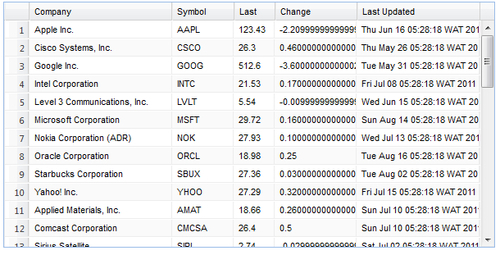The GXT Grid component can be complex to new users, especially with its bells and whistles turned on. However, we can demonstrate a very basic and intuitive usage, one that can be grasped even by GXT beginners.
It turns out that working with Grids basically boils down to working with a list of ColumnConfig objects (the columns) with which to make a ColumnModel which is in turn used alongside a ListStore (contains the data) to construct Grid.

Create a ColumnModel object from a list of ColumnConfig objects and then create a ListStore to hold the data intended for the grid. The grid can now be constructed, configured, and then displayed on the screen.
@Override
public void onApply() {
// A list for the column configurations
List<ColumnConfig> configs = new ArrayList<ColumnConfig>();
// This how you would make a normal column,
// give it an id, label, and initial width
// the id is a property in the bean you are trying...


